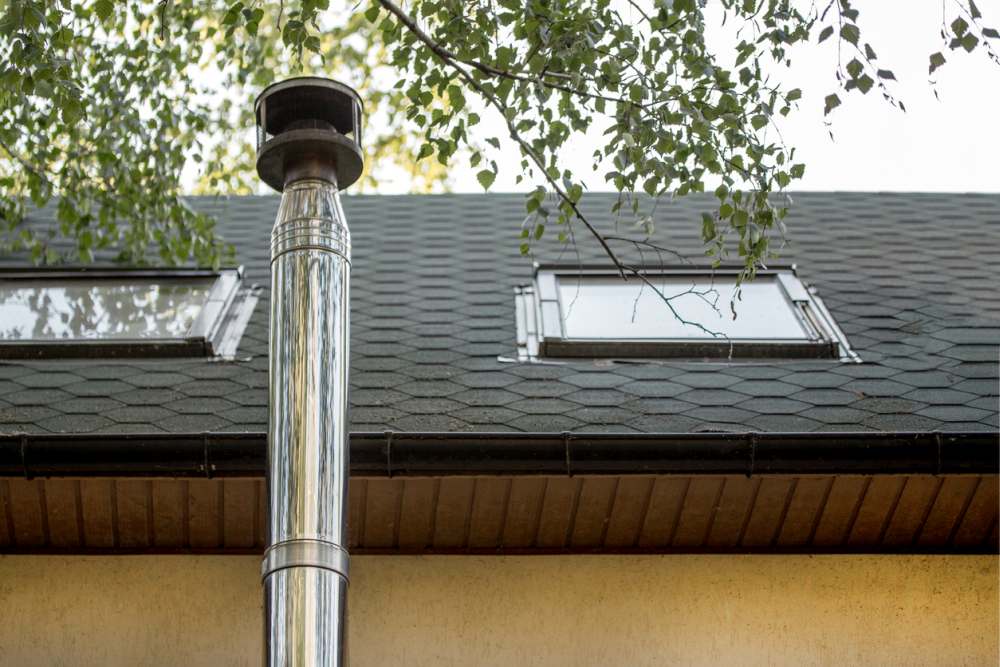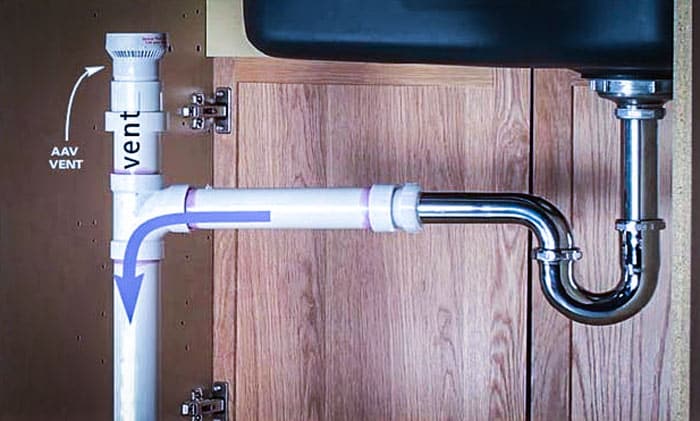The Significance of Ventilation in Building Plumbing Systems
The Significance of Ventilation in Building Plumbing Systems
Blog Article
Any individual seems to have their own unique way of thinking involving Essential Plumbing Vent Pipes: Understanding Their Role.

Proper ventilation in plumbing systems is typically neglected, yet it is crucial for preserving the functionality and security of your home's plumbing. Air flow helps manage atmospheric pressure, avoid the buildup of damaging gases, and make certain the effective elimination of waste. In this guide, we will explore the importance of correct pipes air flow, exactly how it works, and the advantages it gives your plumbing system.
Recognizing Ventilation in Pipes
Ventilation in plumbing describes the network of pipes that enable air to move via the drain system. These vents offer numerous objectives, consisting of regulating air pressure within the pipes, protecting against sewage system gases from entering the home, and aiding in the smooth circulation of wastewater.
How Ventilation Works in Plumbing Equipments
Air Pressure Regulation
Proper ventilation keeps well balanced air pressure within the plumbing system. When water flows through pipes, it displaces air. Without sufficient ventilation, this variation can create adverse stress, bring about slow drains pipes or siphoning of water from catches, which can trigger undesirable smells to permeate right into the home.
Protecting Against Drain Gas Accumulation
Among the most essential features of pipes vents is to avoid sewage system gases, such as methane and hydrogen sulfide, from accumulating within the home. These gases can present severe health and wellness risks and are highly combustible. Vent pipes enable these gases to get away safely outdoors.
Assisting in Waste Elimination
Air flow aids in the reliable removal of wastewater by avoiding airlocks in the drainage system. When air can move freely via the vents, it enables water and waste to move smoothly with the pipes, minimizing the danger of blockages and back-ups.
Types of Plumbing Vents
Main Stack Vent
The primary stack vent, also known as the air vent stack, is the primary air vent in a plumbing system. It prolongs from the major drain line up with the roofing system, allowing gases to run away and fresh air to enter the system.
Branch Vent
Branch vents attach to the major stack air vent and offer individual components, such as sinks, commodes, and showers. These vents make certain that each fixture has adequate ventilation to function effectively.
Air Admission Valve (AAV).
An Air Admittance Valve (AAV) is a one-way shutoff that allows air to get in the plumbing system without the demand for a typical air vent pipe extending via the roof covering. AAVs are commonly used in restorations or areas where setting up a basic vent is not practical.
Signs of Poor Ventilation in Plumbing.
Slow Draining Fixtures.
If your sinks, bathtubs, or commodes are draining pipes gradually, maybe an indication of poor ventilation. Poor air flow can develop a vacuum impact, making it challenging for water to drain pipes correctly.
Gurgling Sounds.
Gurgling sounds coming from drains are typically a result of air being sucked through water traps as a result of unfavorable stress in the pipes. This is a clear indication of not enough ventilation.
Undesirable Smells.
Drain smells inside your home are a warning that your plumbing system is not effectively aerated. This can suggest that sewage system gases are not being sufficiently aired vent outside, causing potentially dangerous problems.
Common Air Flow Errors.
Inadequate Vent Sizing.
Making use of undersized air vent pipes can bring about inadequate air flow and stress inequalities in the system. It's necessary to make use of vents that meet the certain requirements of your pipes system.
Improper Vent Positioning.
Placing vents as well much from the fixtures they serve can minimize their performance. Appropriate positioning ensures that air can flow freely and efficiently through the system.
Disregarding Code Demands.
Building ordinance provide particular guidelines for plumbing ventilation. Neglecting these codes can result in a system that stops working to work properly and might lead to expensive repair work or health hazards.
Benefits of Proper Ventilation.
Boosted System Performance.
Effectively ventilated pipes systems run more successfully, with less blockages, faster draining pipes, and much less pressure on the pipes. This efficiency prolongs the life expectancy of the pipes system.
Improved Air Top Quality.
By avoiding drain gases from entering your home, appropriate ventilation contributes to better indoor air top quality, making your living atmosphere healthier and much more comfortable.
Protecting Against Water Damages.
Sufficient air flow aids avoid water from being siphoned out of traps, which can cause sewer gases getting in the home and triggering water damages in time.
Actions to Make Sure Proper Ventilation.
Consulting Pipes Codes.
Always seek advice from neighborhood pipes codes when developing or modifying your pipes system. These codes give the necessary guidelines for appropriate airing vent and guarantee your system fulfills safety and security criteria.
Normal Examination and Upkeep.
Normal inspections can help recognize possible air flow problems before they become major issues. Upkeep jobs, such as cleansing air vent pipelines and checking for obstructions, are crucial for maintaining the system in good working order.
Expert Setup.
For new installations or significant alterations, it's smart to hire a specialist plumbing. They have the know-how to guarantee the air flow system is properly designed and mounted according to code.
Conclusion.
Correct ventilation is a critical part of any kind of plumbing system, guaranteeing that it works effectively and securely. By comprehending the value of air flow, identifying the indications of bad ventilation, and taking steps to preserve your system, you can prevent costly concerns and safeguard your home's air quality.
4 Things You Should Know About Your Plumbing Vents
What Plumbing Vents Are
Also called a vent stack, a plumbing vent is a vertical pipe attached to your drain line that runs through your roof. The plumbing vent pipe, or plumbing air vent, removes gas and odors from your plumbing system and allows fresh air to enter the pipes, helping the water to flow out of the drain pipes.
What Plumbing Vents Do
Plumbing vents have two basic functions. One of which is to allow unpleasant smelling wastewater and sewer gasses to escape your plumbing system instead of entering your home. Plumbing vent pipes are typically located on roofs, away from windows, to ensure the fumes exit the home completely.
The other function of the plumbing vent is to move fresh air into your plumbing system. This helps move water through every plumbing fixture in your house, like toilets and sink drains. Think of the way in which you need to let a little air into the bottle as you pour soda in order to make the drink flow smoothly.
Different Types of Plumbing Vents
True vent: This is the most common vent option. In simplest terms, a true vent is a vertical pipe attached to your drain line that exits through the roof. They often function as the main vent that other fixtures can connect to. Re-vent pipe or auxiliary vent: Attached to the drain line near specific plumbing fixtures, re-vent pipes run up and over to connect to the main vent. Common vent: Two plumbing fixtures installed on opposite sides of a wall are typically tied into the vent stack using something known as a sanitary cross. Wet vent: This venting option operates as a drain pipe and a vent at the same time. Wet vent drainage systems drain water from one fixture while venting the air from another. Although they’ve been used for over 100 years, wet vent systems have only recently been added to the plumbing code in many areas. If you’re planning on installing one in a bathroom remodel, make sure you check your local code prior to construction. Loop vent: For free-standing fixtures like kitchen island sinks, loop vents are ideal. These vent pipes run under the floor, rise from the P-trap, and create a loop inside the cabinet sink. Air admittance valve: An AAV is a one-way mechanical valve typically installed at the site of the plumbing fixture. AAVs allow venting to occur without having to tie into a larger venting system. They’re ideal for venting fixtures where you aren’t able to easily connect to an existing vent system. Common Plumbing Vent Issues
Although vent pipes typically don’t have water flowing through them, they’re still subject to many typical plumbing issues. For example, clogs are one of the most common problems associated with sewer vent pipes. If your vent pipe gets clogged, all of your plumbing fixtures tied into the vent stack will be affected.
A sink with a slow drain that bubbles and gurgles or a strong sewage smell around your toilet are both indicators that your toilet vent pipe is clogged. Because most vent pipes exit through the roof, old leaves, twigs or even a bird’s nest could be clogging the pipe.
Clogs in your vent pipe system cause a buildup of negative pressure, meaning that water won’t be able to flow out of your home very well. It’s similar to putting your finger over the opening of a straw to trap water inside. When you remove your finger, the water is able to flow out of the straw.
If you suspect you have any blockage in your vent, make sure you have a professional come examine the situation. Left unchecked, a blocked air vent can lead to other costly repairs, like leaks and sediment buildup.
Under Pressure
Pipe vents are essential aspects of a home’s plumbing system. Owning a home means learning about all sorts of things you never put much thought into before. But by understanding as much as you can about the important systems of your home, you can keep those budgets intact and those anxiety levels low.
https://www.homeserve.com/en-us/blog/home-improvement/plumbing-vents/

I stumbled upon that article on What Is a Plumbing Vent and Why Is It Important when doing a search on the web. Are you aware of somebody else who is fascinated about Essential Plumbing Vent Pipes: Understanding Their Role? Be sure promote it. I recognize the value of your readership.
Schedule Today Report this page